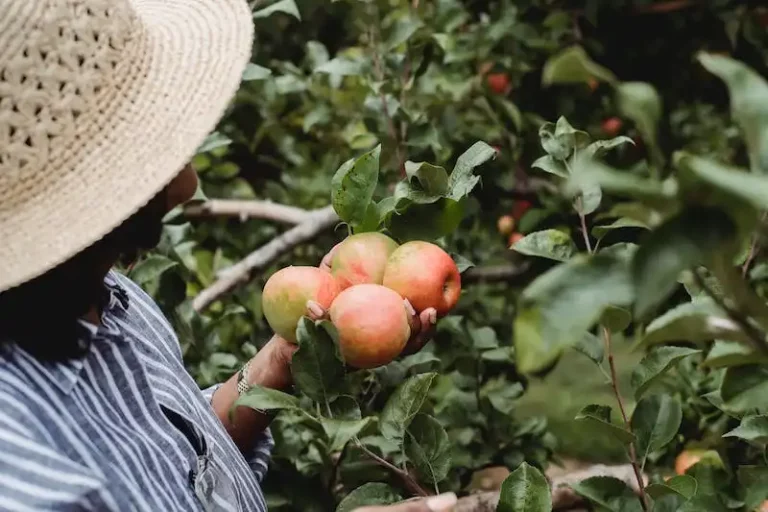When it comes to the proper care and maintenance of a Swiss cheese plant, there are a few key steps you should follow to ensure its health and longevity. First, it’s important to understand that this type of plant, also known as Monstera deliciosa, produces suckers that can be cut and propagated to create new plants. Whenever these suckers are formed, it’s a good idea to cut them off and plant them separately to encourage further growth.
But what is the best way to propagate a Swiss cheese plant? The first step is to make sure you have a good drainage system in place for your plant. Swiss cheese plants like to grow in moist soil, but they don’t like to sit in excess water, so make sure your pot has proper drainage holes.
Once you have your plant’s drainage system in place, you can start the propagation process. Start by cutting off a section of the stem that has some mature roots and at least one leaf. You can use a sharp, sterile knife or pruning shears for this. Dip the cut end in rooting hormone to help encourage root growth, then place the cutting in a warm, moist soil mix.
Keep the soil consistently moist, but not soaking wet, and provide the newly propagated plant with bright, indirect light. It’s best to keep the plant in a warm and humid room, and avoid exposure to cold drafts or sudden temperature changes.
Within a few weeks, you should start to see roots developing on the cutting. Once the cutting has a solid root system, you can transplant it into its own container and treat it as a mature plant.
Proper care of a Swiss cheese plant also involves regular watering, but it’s important to balance this with proper drainage. Water the plant thoroughly, but allow the soil to dry out between waterings to prevent overwatering and root rot.
When it comes to fertilizing your Swiss cheese plant, it’s best to do so during the growing season, which usually occurs in the spring and summer months. Use a balanced, water-soluble fertilizer and follow the instructions on the package for proper dilution and application.
In conclusion, the proper care of a Swiss cheese plant involves regular pruning, propagation, and maintenance. By following these steps and providing the plant with the right growing conditions, you can enjoy the beauty and unique characteristics of this stunning plant for years to come.
For more information on how to care for your Swiss cheese plant, check out the following links:
– Gardening Know How: Swiss Cheese Plant Care Guide
How to grow Swiss cheese plant Monstera deliciosa
If you want to grow a Swiss cheese plant, also known as Monstera deliciosa, there are a few steps you need to follow. This vine-like plant is popular for its unique leaves that have holes or sections, which resemble Swiss cheese.
First, you need to find a healthy plant. Look for one with no wilting leaves or signs of disease. If you have been given a cutting of the plant, make sure to keep it in water until roots have formed.
Next, find a suitable place for your plant. Monsteras enjoy warmth and bright, indirect light, so placing them near a window with access to filtered sunlight is recommended. They can also tolerate lower light conditions, but their growth may be slower.
When it comes to soil, Monsteras prefer a well-draining medium. You can use a regular potting mix with a bit of perlite or sand added for improved drainage. Avoid overwatering the plant, as this can lead to root rot. Allow the top few inches of soil to dry out between waterings.
If you want to propagate your Swiss cheese plant, you can do so by taking stem cuttings. Make sure to use a sharp, clean knife or shears when cutting. The cuttings should include a node, which is an aerial root that the plant uses to cling onto other surfaces.
Once you have the stem cutting, you can place it directly in water or in a well-draining potting mix. Keep it in a warm environment with indirect light, and roots will usually develop within a few weeks.
After the roots have developed, you can transplant the cutting into a larger pot or container with a solid drainage system. Make sure to create a normal potting mix or use commercial potting soil. Avoid using garden soil, as it can be too heavy and affects drainage.
If you have a variegated Monstera, which is a plant with leaves that have spots or stripes of different colors, keep in mind that these plants need more light than their non-variegated counterparts. They may also require more care and attention to maintain their variegation.
Overall, growing a Swiss cheese plant is relatively easy, making it a great choice for beginners. With the right care and conditions, this plant can thrive and become a beautiful addition to your home or office.
How to grow Swiss cheese plants
Growing Swiss cheese plants, also known as Monstera deliciosa, can be a rewarding experience. These tropical trees are characterized by their large, heart-shaped leaves that have unique holes and splits, resembling Swiss cheese. Proper care is key to ensuring their growth and health.
If you want to grow Swiss cheese plants, you can start with cuttings. Cuttings can be taken from a healthy, mature plant, ideally with aerial roots. Make sure to use a clean, sharp tool to avoid any damage. After cutting, wipe the cutting tool with rubbing alcohol to prevent the spread of diseases.
Before planting the cuttings, you should dip the ends in a rooting hormone to promote root growth. This can be purchased online or at your local gardening store. Once the cuttings are ready, you can place them in a container with well-draining soil. A multi-purpose potting mix or a mixture of peat moss and perlite works well.
Swiss cheese plants prefer bright, indirect light, so placing them near a window that receives filtered sunlight is ideal. Avoid exposing them to direct sunlight, as it can cause leaf burn. These plants thrive in warm temperatures, between 65°F and 85°F (18°C to 29°C), so make sure to keep them in a warm area.
When it comes to watering, be careful not to overwater. Swiss cheese plants prefer slightly moist soil, so it’s best to check the top inch of soil and water only when it feels dry to the touch. Overwatering can lead to root rot and other issues. It’s also important to ensure proper drainage in the containers to prevent water from sitting in the bottom.
As your Swiss cheese plant grows, you might notice the emergence of aerial roots. These roots are a natural characteristic of the plant and can be left as they are or guided back into the soil. If you prefer a neater appearance, you can trim them back.
Proper lighting and fertilizer are essential for healthy growth and variegation. Make sure to provide adequate lighting and use a balanced fertilizer during the growing season, which is typically spring and summer. Follow the instructions on the fertilizer packaging for the correct dosage.
Swiss cheese plants are part of the Araceae family, which includes other popular houseplants like pothos and philodendron. Similar care practices can be applied to these plants as well.
While Swiss cheese plants are generally safe for pets and humans, the sap can cause skin irritation in some individuals. It’s always a good idea to wash your hands after handling the plants and keep them away from pets that might be tempted to chew on the leaves.
In conclusion, growing Swiss cheese plants requires proper care and attention. With the right lighting, watering, and fertilization, you can enjoy the unique beauty of these plants in your own home. Take advantage of the online opportunities to learn more about propagating and caring for them, and soon you’ll have your own jungle of Swiss cheese plants.
Cheese plant jump links
If you’re new to growing Swiss cheese plants or need a refresher on how to properly care for them, this guide will provide you with all the information you need. Here, we will cover jump links that will take you directly to specific sections of the article for quick and easy access to the information you need.
Cheese plant care basics
The cheese plant, also known as Monstera deliciosa, is a popular choice among plant enthusiasts due to its large, glossy, heart-shaped leaves. To care for your cheese plant:
– Place it in a well-draining pot with a size that allows at least 2 minutes of drainage after watering.
– Water your plant when the top inch of soil feels slightly damp, but avoid overwatering as this can lead to root rot.
– Keep your plant in a bright location, away from direct sunlight, and provide it with a humid environment, as it naturally grows in rainforests.
Cheese plant propagation
To propagate your cheese plant, follow these steps:
– Take a cutting with at least one node and one leaf, making sure to cut just above a node.
– Place the cutting in water or a well-draining potting mix until roots develop.
– Once the roots have formed, carefully transplant the rooted cutting into a slightly larger container and provide it with the same care as a mature cheese plant.
Cheese plant repotting
If your cheese plant has outgrown its current container, it’s time to repot it. Here’s what you need to do:
– Carefully remove the plant from its pot and check for signs of root damage or overcrowding.
– If necessary, prune any damaged or tangled roots.
– Choose a new pot that is slightly larger than the current one and has proper drainage holes.
– Place some well-draining potting mix in the new pot and gently place the plant in it. Backfill with more soil and lightly tamp it down.
– Water the plant thoroughly after repotting and continue to care for it as usual.
Now that you have access to these jump links, you can easily navigate to the sections you need and quickly find the information you are looking for. Happy growing!



